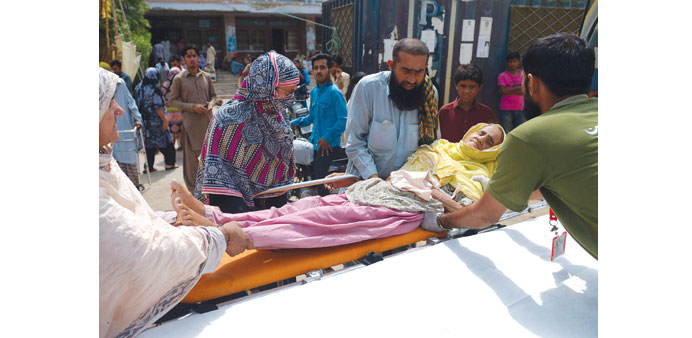By Steff Gaulter
Just when you thought things in Qatar couldn’t get any hotter, we enter the month of July. While the thermometer this month might only read a fraction higher temperature than last month, unfortunately the weather is likely to feel significantly worse. In the middle of July we usually see an increase in the amount of humidity in the air, and this makes the heat feel even hotter than it actually is.
Living in Qatar, we know how dangerous the heat can be. It can cause dehydration and heatstroke, but fortunately wealthy Qatar allows most of us to spend the summer scurrying between our air conditioned homes and our air conditioned offices in air conditioned cars. While the air conditioning is blowing, there are no major concerns, but could you imagine what would happen if there were a country-wide power cut?
Like any city, there are occasional power cuts in Qatar, due to essential maintenance or when a workman accidentally cuts through the wrong pipe, but generally they are short-lived. However, in countries that aren’t as well off, blackouts are often far more common place. Often the electricity network will be stretched to capacity, and some countries are forced to rely on rolling black outs in order to provide all its residents with electricity. In a heat wave, there is a greater demand for power as people turn up their air conditioners, which means that the power often fails when the population need it most.
This is what happened during Pakistan’s recent heat wave: the surge in power caused widespread blackouts. Some residents of Karachi claimed that they had suffered without electricity for more than 12 hours every day and the lack of power ensured it was very difficult for the residents to find relief from the heat. As temperatures soared to 44.8C (112.6F) over 1,200 people died and approximately 65,000 more were treated for heatstroke in the city’s hospitals.
However, it wasn’t simply a high temperature that caused problems in Karachi. The humidity was also high, meaning it felt far hotter than the thermometer suggested. In hot weather, the more humid it is, the more uncomfortable the weather feels. That’s because it’s easier for your body to regulate its temperature in dry air.
When you are hot, your body will sweat to keep you cool. The moisture will evaporate from your skin, but evaporation is a difficult process which requires a lot of energy. The water uses your body’s heat for this energy, thereby cooling you down as your sweat evaporates. However, if there is a lot of moisture already in the air that moisture will evaporate more slowly, and therefore you’ll feel hotter.
In Karachi the thermometer read 44.8C, but the humidity meant it felt more like an eye-watering 49C (121F). Added to the problem was the fact that the temperatures didn’t drop sufficiently during the night, which often leads to a high death toll because there is no chance for the body to gain an overnight respite. In Karachi, the temperature refused to drop below 33C for two nights running.
Karachi does not usually suffer the extreme heat due to its position on the coast. As the temperature rises, a sea breeze develops which would normally act to cool the city. However, during the recent heat wave a low pressure cut off the sea breeze and allowed the temperatures to soar. This allowed the heat to build, turning the heat wave into Pakistan’s deadliest in recorded history.
Pakistan is certainly not the only country to have suffered extreme heat waves. One of the most deadly heat waves struck Europe in August 2003 and led to the death of approximately 30,000 people. As the world’s climate continues to change, heat waves are expected to become more common. According to the India Meteorological Department this is already evident in India, where heat waves have increased by a third between 1961 to 2010.
However, despite their increasing frequency, research into heat waves has not been given its due urgency. This is partly due to the slow pace of a heat wave, unlike other more dramatic weather situations such as a tornado or a tropical cyclone. However, as incidents like this occur, more resources are likely to be made available to scientists in order to help in their prediction.
In many ways we are lucky to live in Qatar, where the weather is extremely hot, but the country is equipped for the heat. Air conditioning is common place and the electricity network is not over stretched. Therefore the heat is extreme, but we have the infrastructure to protect ourselves.
This month, however, often heralds the start of the worst of the weather that Qatar has to offer, and that is the humidity. In mid-July, the air suddenly becomes laden with moisture. Not every day in July and August will be humid, it all depends on the direction of the wind. A wind from the east will bring the highest humidity to Doha, whereas our northwesterly winds will bring dry air. By about mid-September the weather will begin to break. It will be a gradual process, but slowly the heat will subside and people will begin to venture outside.

HEATWAVE IN KARACHI: Relatives shift a heatstroke victim to a hospital in Karachi, Pakistan on July 1. Photo by AFP


